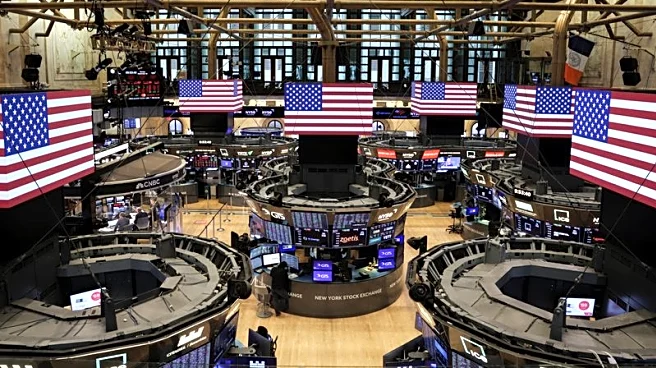What's Happening?
Gold is experiencing a notable resurgence, with prices nearing all-time highs due to global economic uncertainties, inflationary pressures, and geopolitical tensions. Central banks are increasingly accumulating gold reserves, reinforcing its role in diversified portfolios. Long-term forecasts suggest continued price increases through 2030, with projections ranging from $4,979 to $8,900 per ounce. Economist Charlie Morris anticipates gold prices exceeding $7,000 per ounce by 2030. This bullish outlook is driven by central bank demand, geopolitical instability, and declining confidence in the U.S. dollar.
Why It's Important?
The anticipated rise in gold prices has significant implications for various sectors. Gold mining companies are poised to benefit from increased revenue and profit margins, leading to enhanced exploration and shareholder returns. Major players like Newmont Corporation and Barrick Gold Corporation are expected to gain substantially. Conversely, sectors such as consumer discretionary, industrials, and real estate may face challenges due to inflation and higher interest rates. Gold's performance could also impact financial markets, drawing capital away from interest-bearing assets and affecting cryptocurrency investments.
What's Next?
Looking ahead, gold prices are expected to maintain upward momentum, with forecasts suggesting consolidation between $3,800 and $4,000 per ounce leading up to 2027. Long-term projections for 2030 remain bullish, driven by inflation, monetary dynamics, and geopolitical tensions. Central bank purchases, particularly from China and India, are expected to support demand. Investors are advised to adopt a long-term perspective, using price pullbacks as opportunities to build positions and strategically allocate gold in portfolios.
Beyond the Headlines
Gold's trajectory reflects fundamental shifts in the global economy, including persistent inflation and strategic diversification by central banks. Its role as a safe-haven asset and hedge against currency debasement underscores its lasting impact on the financial system. Investors should monitor inflation rates, central bank policies, and geopolitical developments to navigate gold's future movements. A strategic allocation to gold can protect and potentially grow wealth in the coming years.











